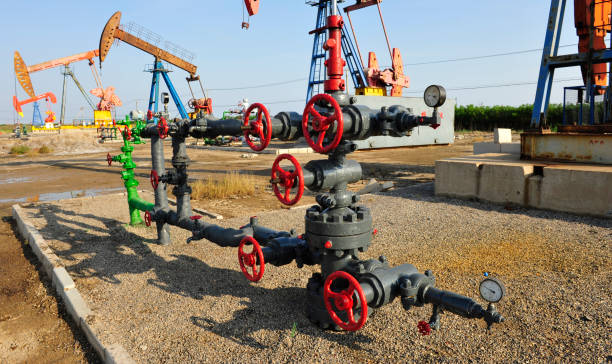English

Dissolvable Bridge Plug
The Dissolvable Bridge Plug That Actually Works: My Honest Experience After Months in the Field
Let’s be honest — if you’ve ever dealt with traditional bridge plugs in a multistage fracturing operation, you probably still remember the frustration.

I’ve been there. Hours wasted on mill-outs. Unexpected debris clogging the wellbore. Delays that send project costs skyrocketing. You name it, I’ve seen it.
That’s why, when dissolvable bridge plugs (DBPs) started making noise in the market, I was skeptical — but also curious. A plug that disappears after use, saving you the mill-out? It sounded like marketing fluff. But after running them on multiple wells across different environments, I can confidently say this: a well-chosen dissolvable bridge plug can change your completion workflow forever.
And yes — not all DBPs are created equal. So let me break it down for you — the real deal, from field performance to how to pick one that won’t let you down.
What Exactly Is a Dissolvable Bridge Plug?
If you’re new to the concept, here’s the simple version.
A dissolvable bridge plug is a temporary isolation tool designed for zonal isolation in multistage fracturing operations. Unlike conventional plugs that require mechanical milling to remove, dissolvable plugs are made from metallic or polymer materials that degrade in contact with wellbore fluids (typically brine, acid, or water).
Once their job is done, they simply dissolve — leaving a clean wellbore and eliminating the need for costly intervention.
So instead of fighting with coiled tubing and mill-outs, you just… wait. It’s that simple.
My First Run with a Dissolvable Plug: The “Aha” Moment
I’ll never forget the first time I tried one.
We were working on a tight deadline — a deep horizontal well with 20 stages. Every hour mattered. Traditionally, post-frac mill-outs would take up to 48 hours. So we decided to trial a dissolvable bridge plug from a reputable supplier.
At first, I was nervous. What if it didn’t dissolve fully? What if residue blocked flowback? But when we came back for flowback three days later — the pressure dropped smoothly, and production ramped up as expected. No mill-out, no intervention, no downtime.
That’s when it clicked: this wasn’t just a “fancy” plug. It was a cost-control weapon.
Core Features That Actually Matter (Forget the Marketing Hype)
After testing multiple brands and models, here’s what I learned: flashy brochures don’t mean much. What truly matters for DBP performance are these five factors:
- Material Composition – Look for magnesium-based or aluminum-based dissolvables with engineered corrosion rates. The wrong alloy can either dissolve too fast or too slow.
- Temperature and Salinity Range – Always check the rated temperature (typically 80–180°C) and salinity tolerance. Mismatch these, and your plug either disintegrates too early or refuses to dissolve.
- Pressure Rating – A reliable plug should handle at least 10,000 psi differential pressure during frac.
- Dissolution Predictability – Controlled, uniform dissolution is key. You don’t want partial residue.
- Field Validation – Don’t buy “lab-only” heroes. Insist on case studies and field data in environments similar to yours.
The Real-World Results (After 6 Months of Use)
Here’s what I actually observed after running dissolvable plugs across multiple wells:
| Parameter | Traditional Bridge Plug | Dissolvable Bridge Plug |
|---|---|---|
| Mill-out time | 36–48 hours | 0 hours |
| Post-frac debris | Heavy | Minimal |
| Cost (including intervention) | $$$ | $$ |
| Risk of wellbore damage | Moderate–High | Low |
| Efficiency | 70–80% | 95%+ |
| Operator workload | High | Low |
Verdict: The difference is night and day.
Even factoring in the higher upfront cost per plug, the total project savings from time, manpower, and intervention easily outweighed it — by as much as 30–40% in our case.
Quick Comparison: Top Dissolvable Bridge Plug Options (2025 Edition)
I’ve tried several — and while I won’t turn this into a product ad, here’s my real-world ranking based on performance, reliability, and availability.
| Brand | Dissolution Time | Max Pressure | Material Type | Dissolution Fluid | My Rating |
|---|---|---|---|---|---|
| Brand A | 3–5 days | 10,000 psi | Mg-based alloy | Freshwater | ★★★★★ |
| Brand B | 5–7 days | 8,000 psi | Al-based hybrid | High-salinity brine | ★★★★☆ |
| Brand C | 2–4 days | 9,500 psi | Polymer composite | Acidic environment | ★★★★☆ |
| Brand D | 4–6 days | 10,000 psi | Mg-Al alloy | Brine/acid | ★★★★★ |
Each of these has its place — and honestly, the “best” depends on your well temperature, salinity, and pressure conditions.
Pros and Cons (Because No Tool Is Perfect)
I’ll be fair — dissolvable plugs aren’t magic. They solve a lot, but not everything.
What I love:
- No mill-out → faster time to production
- Lower operational risk → fewer coiled tubing trips
- Environmentally cleaner → less debris, fewer interventions
- Highly flexible → ideal for both vertical and horizontal wells
What still needs work:
- Price sensitivity – Upfront cost can be double that of standard plugs
- Fluid dependency – Dissolution speed can vary with water chemistry
- Inventory logistics – Shelf life and storage conditions matter more than you’d think
But overall, when you add up the savings and time efficiency, it’s hard to go back once you’ve experienced a seamless DBP completion.
How to Choose the Right Dissolvable Bridge Plug for Your Project
If you’re about to make your first purchase (or upgrade from an older model), here’s my 3-step decision framework that’s saved me countless headaches:
- Match Material to Environment
- High-temperature, high-salinity wells → go for aluminum-magnesium alloys.
- Low-salinity wells → magnesium or composite plugs perform better.
- Ask for Real Field Data
- Request actual case studies in similar well conditions.
- Don’t rely on lab results — they almost always overpromise.
- Prioritize Predictability Over Speed
- A slower but consistent dissolution is better than a fast, uneven one that leaves residue.
If you follow these three principles, you’ll avoid 90% of the issues that new users run into.
Final Thoughts: Why I’ll Never Go Back
After months of using dissolvable bridge plugs, I can say this with confidence:
they’re not just a “trend” — they’re the future of well completions.
Sure, the first few runs might make you nervous. You’ll probably over-monitor the pressure curves and second-guess the dissolution timeline. But once you see how seamlessly the well transitions into production without intervention, you’ll wonder why you didn’t switch sooner.
I genuinely believe a well-chosen DBP isn’t just a tool — it’s a strategic advantage. It simplifies operations, cuts cost, and reduces risk.
So if you’re still on the fence, take this as your sign. Try it once — on one well.
Because once you see it work, you’ll never want to mill another plug again.
Quick Summary for Busy Engineers
- Main Benefit: Eliminates the need for mill-outs
- Key Feature: Dissolves in contact with wellbore fluids
- Best Use Case: Multistage fracturing and completion operations
- ROI Window: Typically saves 30–40% in overall operation time
- Pro Tip: Always match plug material to your specific well fluid and temperature






